THE DESIGN PROCESS AND UNUSUAL IMAGERY
The windows, together with the stone cross and plaque, were the brainchild and project of C P Allix, churchwarden at St Mary’s and prominent member of the local gentry. He is reported as collecting pictures of weaponry and scenes of war from magazines, laying them out on the billiard room table at Swaffham Prior House and asking visitors and family members to comment and suggest bible verses to accompany the pictures.
The two War windows are a unique depiction of weaponry and the technology of modern warfare including
• a Zeppelin airship
• tank
• plane
• telegraph station
• howitzer
• shell manufacture
• mine laying by submarine
• ocean going liner
Rather than depicting religious, allegorical or noble figures as is usual in stained-glass windows the War windows show contemporary working people, including women, as factory workers, military personnel, Red Cross and medical staff and clerics.
The Peace window, characterised by the use of green colouring, by contrast shows a return to an idealised, pastoral village life.
The connections between the illustrations and texts are not always entirely appropriate. For example, the most violent image on the North West window depicts a German attack on a British trench using liquid fire (a German flame thrower, or Flammenwerfer, as first used in 1915 at Verdun). The text accompanying this depiction of nations in violent conflict is “And signs in the earth beneath blood and fire and vapour of smoke”. This is from Acts 2, the story of Pentecost. At Pentecost people of many nations are surprised to hear their own language being spoken by foreigners – a sign of different nationalities being united, not divided.
